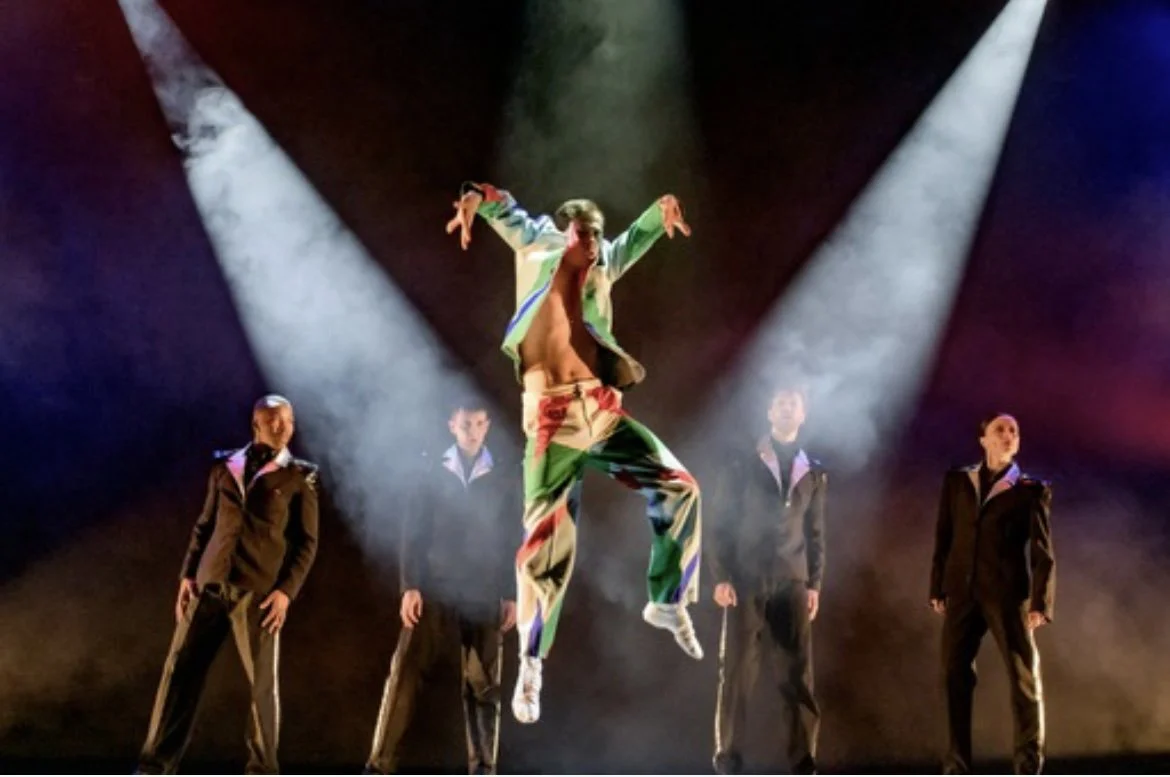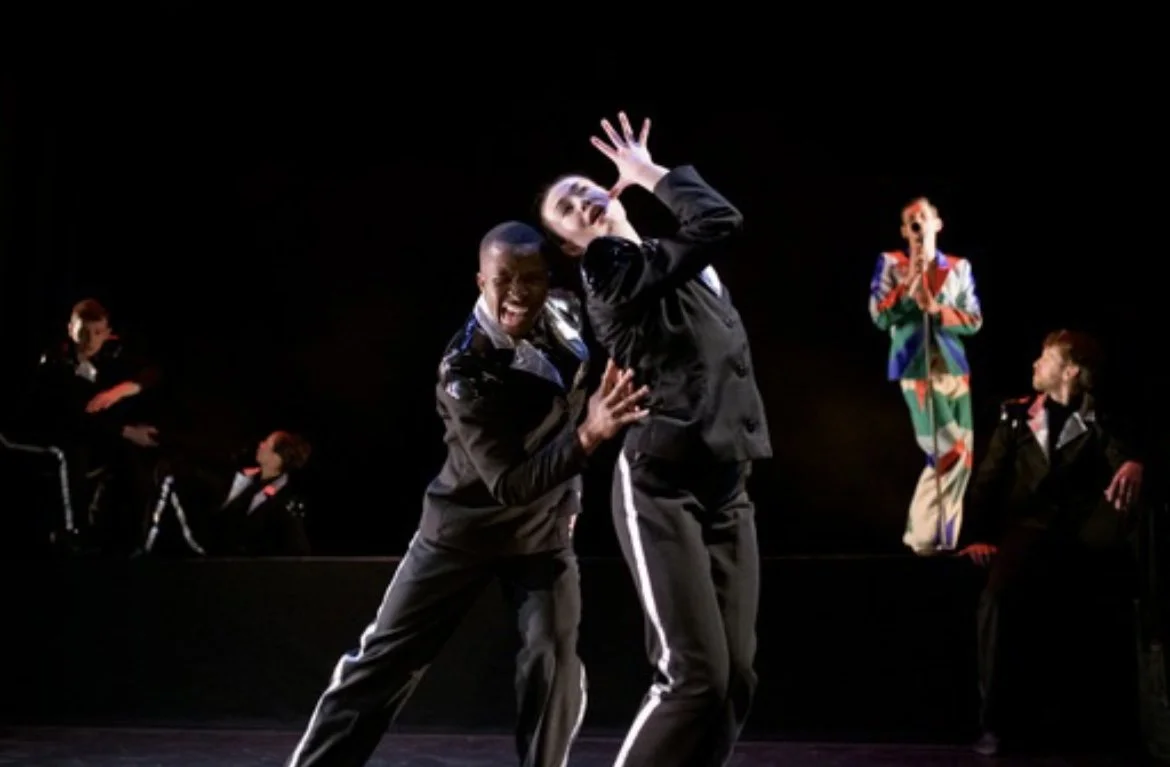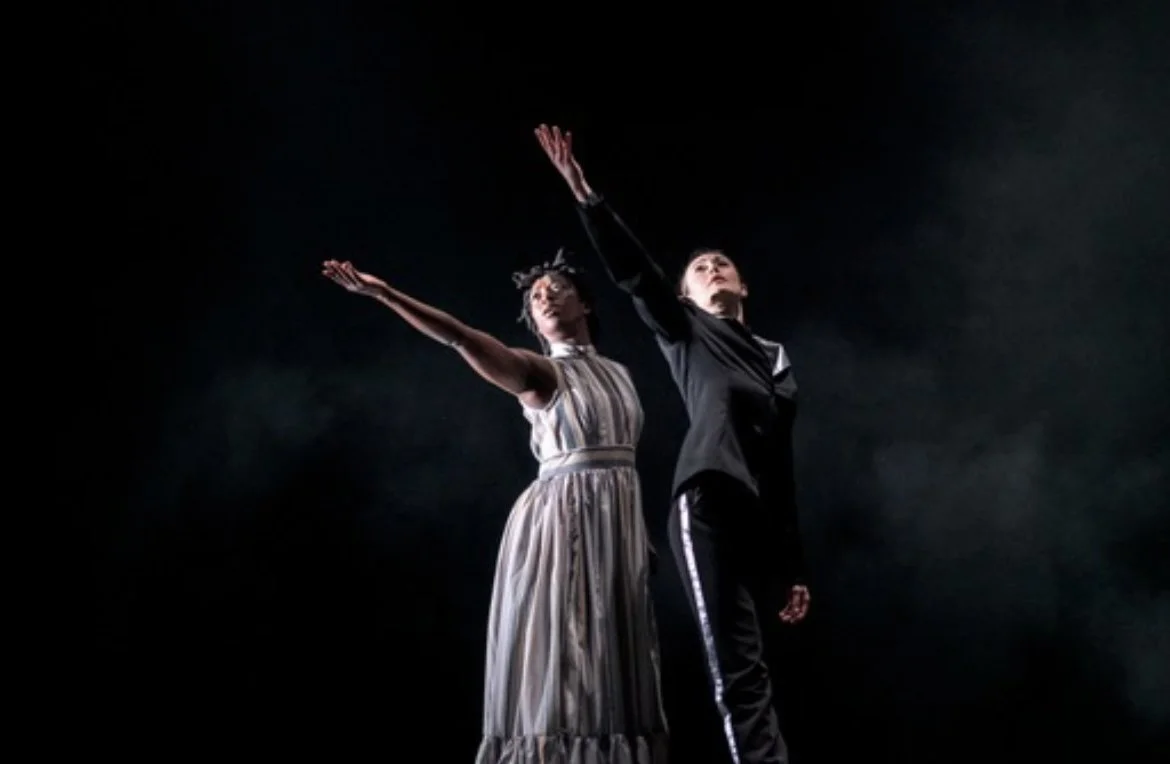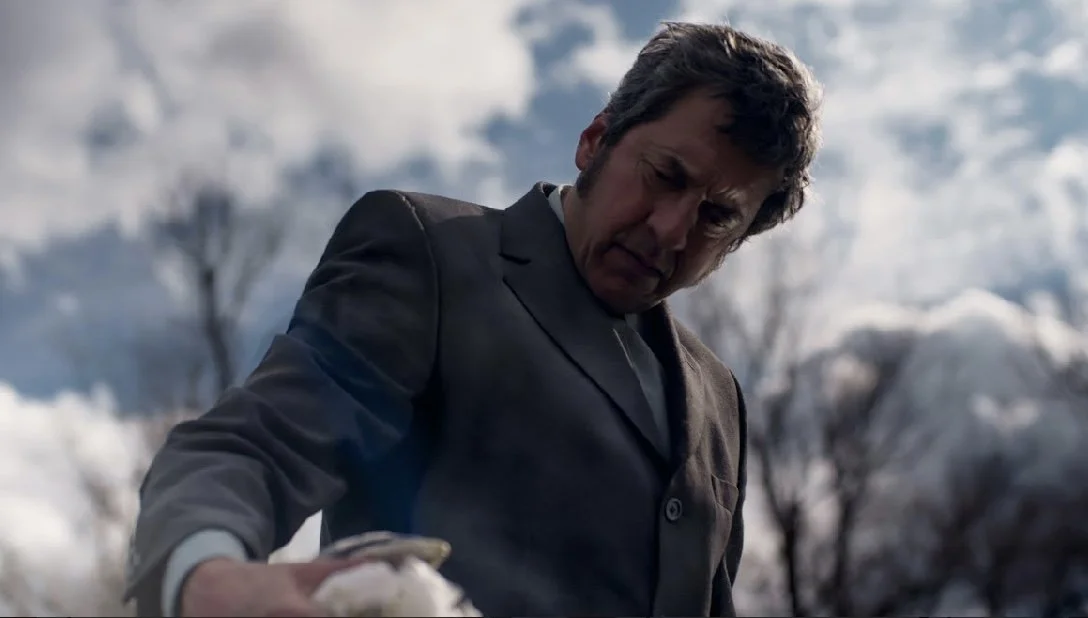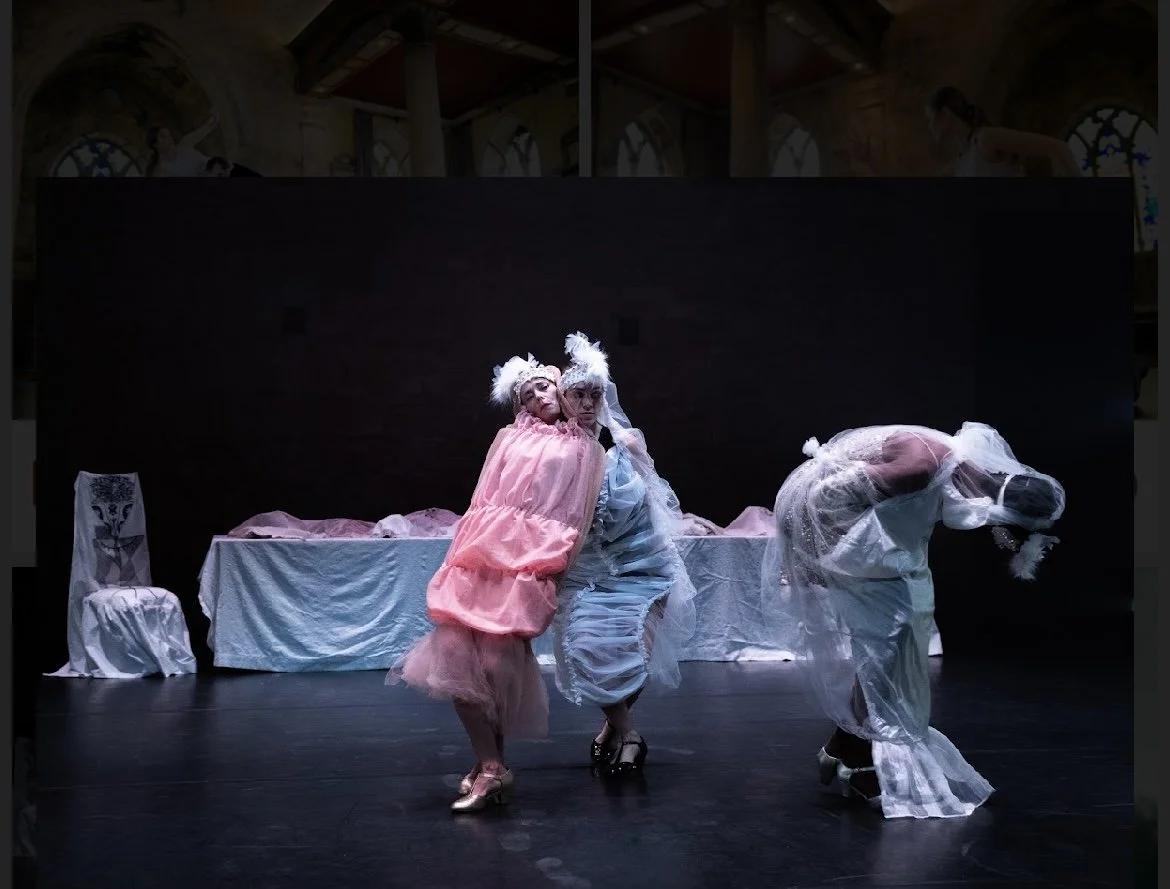Impermanence, the allure of 1913-1939, and fascinating fascism
Impermanence, a dance theatre company based in Bristol, is entirely new to me. To watch their quadruple bill at Wilton’s Music Hall on Wednesday May 17 was to recognise aspects of English dance theatre from many other productions I’ve observed over the decades, while also to be taken by surprise. The programme was a quadruple bill: three short pieces before the interval, then the hour-long “Venus”. “Venus”, I’m afraid, ends up being an amateurish mess, frivolous about serious topics, maddeningly vague in structure and tone. Still, you can see now and then how it might have become a much more remarkable work. The same - the frivolity, the vagueness, and the potential - is true throughout the programme.
Roseanna Anderson and Joshua Ben-Tovim are central figures: they directed “Venus” and are among its seven performers. Anderson choreographed the opening “Cosmic Yoghurt”, performing in it with two other women. She’s also one of the five performers in Ben-Tovim’s eleven-minute film “Feral”. He, Ben-Tovim, is also the choreographer of the fifteen-minute dance, “Enemy of the Stars”, a male duet. But both Anderson’s two female co-dancers in “Cosmic Yoghurt”, Mayowa Ogunnaike and Oxana Panchenko, return in “Venus”, while Kip Johnson, one of the two men in the “Enemy of the Stars” duet, is also in both the “Feral” film and in “Venus”. And Kennedy Jr. Muntanga, Johnson’s co-performer in “Enemy of the Stars”, also returns in “Venus”. All this suggests a community of like-minded colleagues.
This like-mindedness is more evident in the historical consciousness of three of the four pieces, which are all derived from aspects of England in the first half of the twentieth century. “Cosmic Yoghurt” is - more or less - about the British surrealist artist Leonora Carrington (1917-2011), a surrealist artist and feminist who had to discard her aristocratic English upbringing to become herself; “Enemy of the People” is a dance adaptation of “Blast” (1914), a modernist play (by Percy Wyndham Lewis <1882-1957>) that, like a number of works composed just before the First World War, seemed to presage the collapse of the old world order. And “Venus” is, more or less, about Mary Richardson (1882/1883-1961), the Canadian/English suffragette who, notoriously, in 1914, slashed the “Rokeby Venus” (Velásquez’s classic nude of the goddess Venus, recumbent and regarding the mirror held up by her son Cupid). Almost as notoriously, Richardson, in 1932, joined Oswald Mosley’s British Union of Fascists, becoming chief organiser for the party’s women’s section in 1934. Since Leonora Carrington was already a surrealist artist of note in the mid-1930s, the programme seems largely focused on the era between 1913 (when Richardson began hunger strikes and other radical suffragette actions) and 1939 (though some of the “Venus” characters have afterlives after that date).
The film “Feral” is a break in tone. It’s about rewilding: it’s based on George Monbiot’s book “Feral, Rewilding the Land, Sea and Human Life”. Remarkably, Monbiot, an internationally acclaimed author and well-known “Guardian” journalist, is one of the film’s five performers. As you would expect, the action is filmed outdoors, in a range of beautiful locations that show sea, river, marsh, and architectural ruin. Close attention is paid to the body of a dead seagull, which is laid in a canoe like some Norse hero. The difference between Monbiot and the other performers is not pronounced, but they are younger and they do what dancing there is. Gestures are semi-heroic, sustained, flowing. Imagery suggests both mourning and invocation. But “Feral” remains a very loose stream of consciousness, a collage of disparate ideas that lead nowhere.
What’s so English about the whole Impermanence programme is its pervasive sense of dancing as acting: that the performers are playing characters, often in specific times and places (and costumes), trying to convey emotions and psyches. The other three works aren’t just fixated on the 1913-1939 period: they’re also studies in camp. Although Leonora Carrington had to shake off her posh English background to become herself, “Cosmic Yoghurt” seems none too keen to shake that off. Partly because the spoken word so often makes a more direct impression than most dancing, the soundbites of Carrington’s classy voice, in the opening and closing sections, stay with us more than any of the three women’s movements or the costumes. The women begin as if shrouded in white, then cast off the outer veils to reveal bright colours. But they themselves don’t seem transformed.
The “Enemy of the Stars” duet has several kinds of implicit drama and contrasts. Johnson is tall, white, bearded; the shorter Muntanga is Black and smooth-skinned. They both use the various levels of the Wilton’s space. When they meet, sometimes with lifts and doublework that feel like stylised martial arts (even capoeira), there’s a not-quite-spontaneous manner that suggests they’re ballet-trained performers who’re trying to reproduce the look of contact improvisation while devotedly clinging on to the elegantly straight lines of their training.
“Cosmic Yoghurt”, “Feral”, and “Enemy” all have elements of physical rigour and spatial amplitude that make them watchable if not compelling. So does the final “Venus”, but here a pronounced devotion to camp keeps diluting the production into silliness. “Venus” itself is about the strange journey of Mary Richardson, the suffragette who becomes a fascist, the militant woman (herself shattered by the force-feeding she endured when trying to starve for her cause in prison) who vandalised the “Rokeby Venus” but supported a far more destructive political cause - fascism. This would be fascinating, but “Venus” suggests that Anderson and Ben-Tovim aren’t nearly as fascinated by the mysterious Richardson as they are by such peripheral figures as Unity Mitford, her sister Diana Mosley, and the Italian futurist Filippo Marinetti. Marinetti was one of the artists fatally attracted by fascism, but “Venus” not only fails to make that clear, it insists on making Marinetti tiresomely flamboyant and trivial.
The superficial glamour of fascism is superficially illustrated by two excerpts of Wagner. The cue for this is the voice of the elderly Diana Mosley in “Desert Island Discs”, choosing part of “Die Walküre”. It’s characteristic of “Venus” that we hear her mentioning the tenor Wolfgang Windgassen as Siegmund but then are given a section of “Walküre” in which Siegmund is not heard and in a recording in which Windgassen did not sing. Next, a passage from “Tristan und Isolde” is played in which the attendant Brangäne, in gloriously long, slow phrases, warns the lovers to be on their guard while she keep watch; it’s accompanied by a duet where two dancers move briskly across the stage, neither surrendering themselves to love like Tristan and Isolde nor vigilant like Brangäne. It’s possible that Diana and Oswald Mosley were like Tristan and Isolde, so mutually infatuated that they became deaf to larger concerns; it’s also possible that the heroic sensuality of Wagner’s music seemed to embody much of what fascists loved (though it has mattered greatly to many anti-fascists too). But “Venus”, a hopelessly loose collage, make neither of those points. It’s the work of a collective of artists who don’t yet know how to connect seriousness to entertainment valuably.
In general, “Venus” rests on the assumption that Hitler’s fascism was bad, that fascists were misguided, and that a number of classy charming English people were deluded into falling for the charms of various führers. Those assumptions, however, are too casually made. Hitler and the evil of the Nazis are too easily set up for us to hate. Actually, if two of the Mitfords could fall for fascism, so can people today. (I confess that, while I objected to Marinetti himself as seen in “Venus”, I was always enthralled by the colours and patterns of his costume, and always grateful for his sheer energy.) The decadence of the pre-1939 era can still seem gruesomely seductive. “Venus” ends up having its feet in two camps. It’s charmed by the chumps who were suckers for Hitler, and it can’t be bothered to show why fascism is not a good thing.
1: “Venus”: Filippo Marinetti jumps.
2: “Venus”: ensemble.
3: “Venus”: ensemble
.
4: George Monbiot in “Feral”.
5: “Cosmic Yoghurt”: Roseanna Anderson, Mayowa Ogunnaike, Obama Panchenko.
